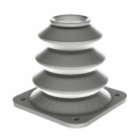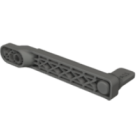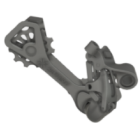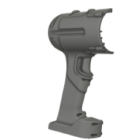What is post-processing?
In 3D printing, finishing a print doesn’t mean the part is ready for use. The object you remove from the build chamber — whether it’s an FDM prototype or a sintered nylon component — often still needs refinement. This crucial stage is known as post-processing, and it can determine everything from surface quality to performance and visual appeal.
Post-processing involves a variety of actions that improve the final characteristics of a printed part. These steps can include removing support structures, cleaning excess material, curing or heat treating, improving surface finish, and applying functional or aesthetic coatings. The complexity of this phase depends on the technology and material used, as well as the intended application of the part.
Process depends on technology
Each 3D printing method brings its own post-processing demands. For example, FDM often requires manual support removal and sanding to reduce visible layers, while SLA involves washing resin parts in isopropyl alcohol and UV curing to achieve final strength. In powder-based methods like SLS or MJF, the process starts with depowdering and may include dyeing, polishing, or surface sealing. Metal parts from laser-based methods such as DMLS or SLM often require even more advanced post-processing like heat treatment or CNC finishing.
Regardless of the method, the goal is the same: to unlock the full potential of the printed part, whether it’s a visual model, a functional prototype, or an end-use component.
What makes post-processing essential?
Post-processing isn’t an optional extra — it’s an integral part of additive manufacturing. Without it, printed parts may not function properly, meet quality standards, or look as intended. For industrial users especially, skipping post-processing can mean compromised tolerances, weak mechanical performance, or inconsistent aesthetics.
While some parts can be used straight out of the printer, most benefit significantly from even a minimal finishing step. A quick depowdering or a few minutes of UV exposure can dramatically improve durability and usability.
Choosing the right approach
The best post-processing workflow depends on your goals. A designer preparing a visual prototype may focus on sanding and priming. An engineer testing mechanical performance will prioritize accuracy, material curing, or thermal treatment. And someone printing end-use parts might integrate coloring, sealing, or even assembly into the finishing stage.
Rather than treat post-processing as a separate task, it should be part of the design and production strategy from the start — with time, equipment, and skills accounted for.
Summary
Post-processing is where raw prints become refined products. It ensures that parts are not only functional, but also reliable and visually aligned with their purpose. Whether you’re working with polymers, powders, or metals, understanding how to finish your prints effectively is one of the key skills in professional 3D printing.
Explore also
- What is the 3D printing process?
- 3D printing process step by step
- How to make a 3D model for printing?
- What is 3D slicing in printing? Key to print quality and success
- Understanding 3D print settings for better results
- The additive manufacturing process: how 3D printing builds layer by layer
- Printing 3D
- Why do 3D prints fail?
Related categories













